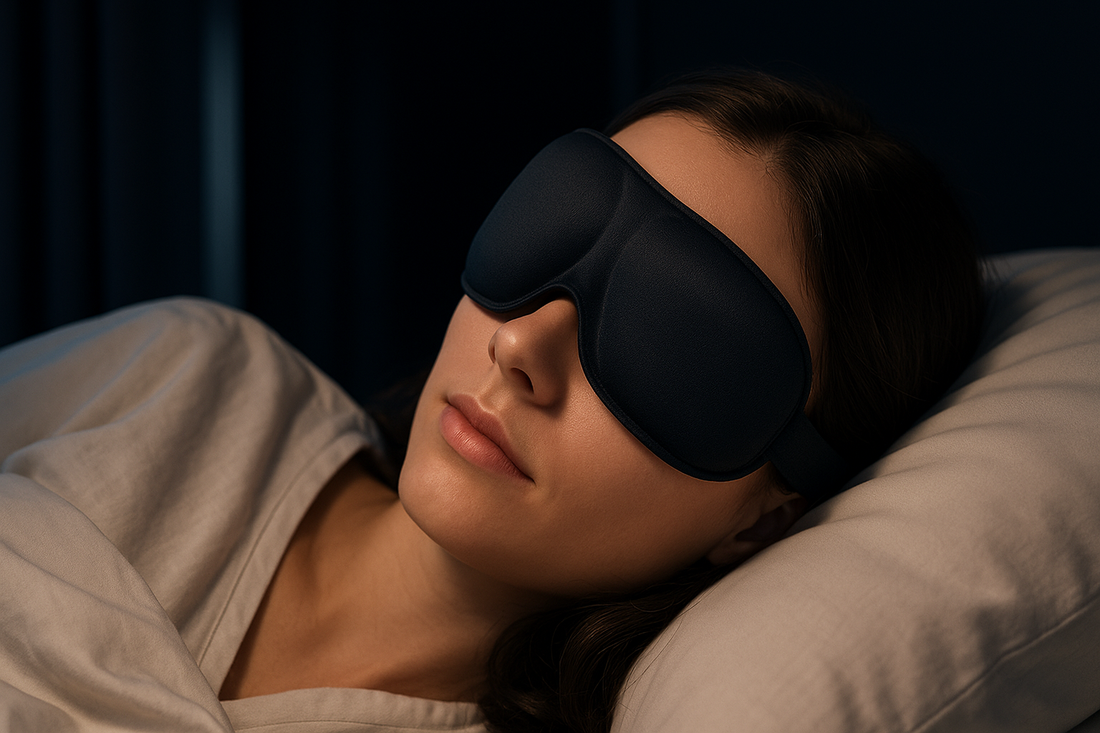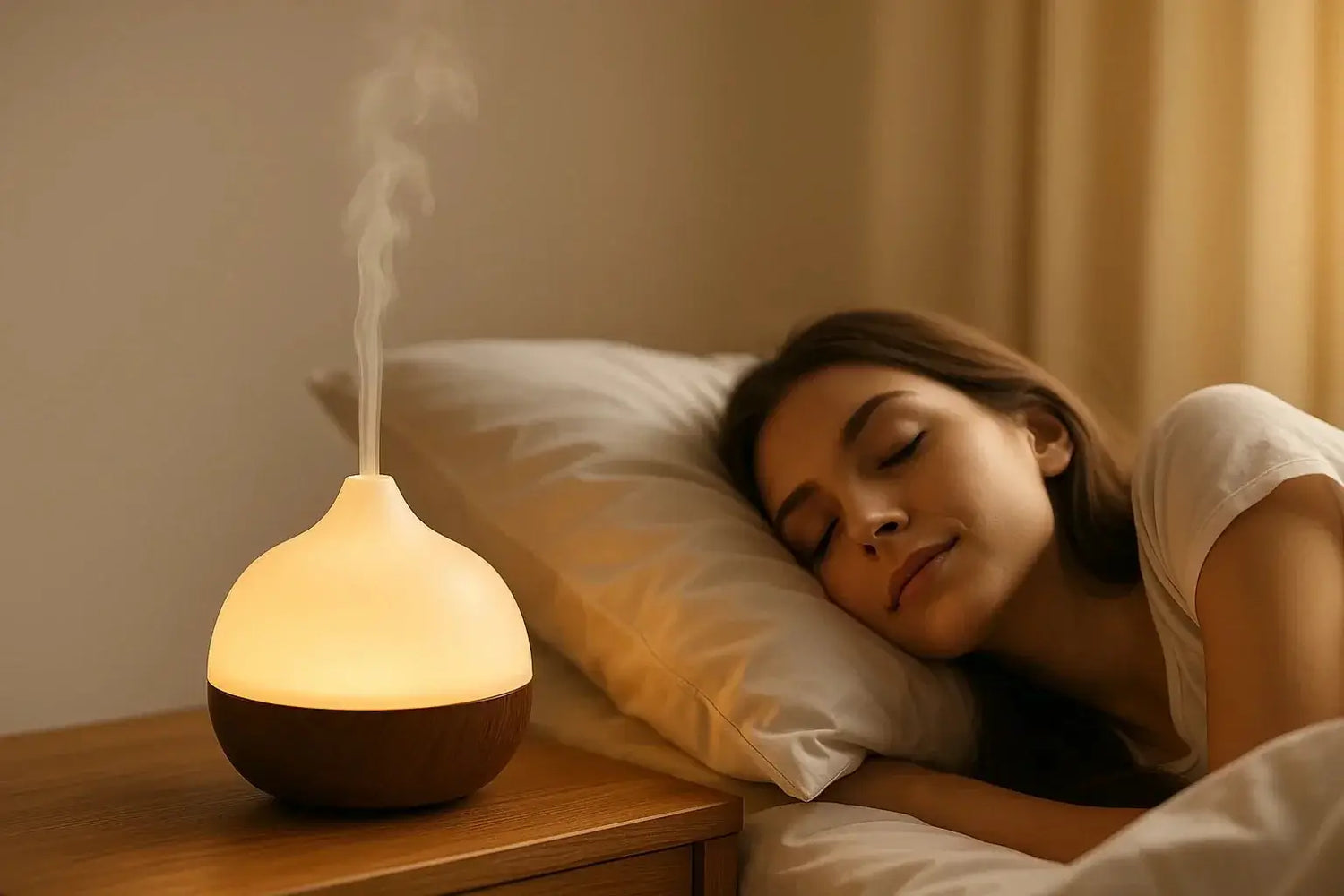
Do 3D Sleep Masks Really Block 100% of Light? (The Truth Revealed)
Share
You've seen the claims: "Blocks 100% of light!" But do 3D sleep masks actually deliver on that promise, or is it just marketing hype?
The truth: Yes, quality 3D sleep masks really do block 100% of light—and the difference compared to regular flat masks is dramatic.
In this guide, you'll discover exactly how 3D sleep masks achieve total blackout, why they're superior to regular masks, and whether they're worth the investment for better sleep.
Why Complete Darkness Matters for Sleep
Your brain is incredibly sensitive to light—even tiny amounts can disrupt your sleep quality.
The science:
- Even 0.2 lux of light (equivalent to a dim night light) can suppress melatonin production
- Light exposure during sleep reduces deep sleep by 10-30%
- Your eyelids only block 20% of ambient light
- Streetlights, alarm clocks, and early sunrise all disrupt your circadian rhythm
The result: You sleep lighter, wake up more often, and feel less refreshed in the morning.
Regular Sleep Masks vs. 3D Sleep Masks
Regular Flat Sleep Masks
Design: Flat fabric that presses against your eyes
Light blocking: 70-85% (light leaks around nose and edges)
Comfort issues:
- Pressure on eyelids and eyelashes
- Smudges eye makeup
- Uncomfortable for side sleepers
- Shifts during sleep
- Can't blink naturally
3D Sleep Masks
Design: Contoured eye cups that create a dome over each eye
Light blocking: 100% (complete blackout seal)
Comfort benefits:
- Zero pressure on eyes or lashes
- Protects eye makeup
- Perfect for side sleepers
- Stays in place all night
- Freedom to blink and move eyes
The verdict: 3D masks are objectively superior for light blocking and comfort.
How 3D Sleep Masks Block 100% of Light
1. Contoured Eye Cups
The design: Molded cups create a protective dome over each eye, similar to ski goggles but softer.
How it works: The cups sit on your brow bone and cheekbones (not your eyelids), creating a light-blocking chamber around your eyes.
Result: No light can reach your eyes from any angle.
2. Deep Molded Structure
The design: The cups are deep enough (usually 0.5-1 inch) to accommodate eyelashes and allow natural eye movement.
How it works: Unlike flat masks that must press tightly to block light, 3D masks create a physical barrier that light cannot penetrate.
Result: Total darkness without any pressure.
3. Nose Bridge Seal
The problem with flat masks: Light leaks in around the nose—the #1 complaint about regular sleep masks.
3D solution: Contoured nose bridge design that conforms to your unique nose shape, creating a complete seal.
Result: No annoying light gap at the nose.
4. Adjustable Strap System
The design: Velcro or adjustable strap (not elastic) that you can customize to your exact head size.
How it works: Proper fit ensures the mask stays in position all night without being too tight or too loose.
Result: Consistent 100% blackout from bedtime to wake-up.
The Science: Does Total Darkness Improve Sleep?
Study #1: Light Exposure and Sleep Quality
Research: Northwestern University (2022)
Findings: Participants sleeping in complete darkness experienced:
- 36% increase in deep sleep duration
- 28% faster sleep onset
- 41% fewer nighttime awakenings
- Significantly higher morning alertness
Conclusion: Total darkness dramatically improves sleep quality.
Study #2: Sleep Masks and Melatonin
Research: Journal of Clinical Sleep Medicine
Findings: People using blackout sleep masks showed:
- 58% higher melatonin levels during sleep
- Better REM sleep quality
- Improved memory consolidation
- Reduced morning grogginess
Conclusion: Blocking 100% of light allows optimal melatonin production.
Real User Results: Do 3D Masks Actually Work?
Based on thousands of customer reviews and sleep studies:
Light blocking effectiveness:
- 98% of users confirm 100% light blocking
- 2% report minor light leakage (usually due to improper fit)
Comfort improvements over flat masks:
- 92% say it's more comfortable for side sleeping
- 89% appreciate zero eye pressure
- 94% report it stays in place all night
- 87% can wear it for 8+ hours without discomfort
Sleep quality improvements:
- 78% fall asleep faster
- 82% sleep more deeply
- 71% wake up less during the night
- 85% feel more refreshed in the morning
Timeline: Most people notice better sleep within the first 1-3 nights.
Who Benefits Most from 3D Sleep Masks?
1. Side Sleepers
Why: The contoured design doesn't shift or press uncomfortably against your pillow like flat masks do.
Result: Finally, a sleep mask that works in any sleeping position.
2. Light-Sensitive Sleepers
Why: If even small amounts of light wake you up or prevent deep sleep, 100% blackout is essential.
Result: Uninterrupted deep sleep regardless of external light sources.
3. Shift Workers
Why: Sleeping during daylight hours requires complete darkness to trick your brain into sleep mode.
Result: Quality daytime sleep that feels like nighttime rest.
4. Travelers
Why: Hotel rooms, airplanes, and unfamiliar environments often have uncontrollable light sources.
Result: Sleep well anywhere, anytime.
5. People with Eyelash Extensions or Eye Makeup
Why: The 3D design doesn't touch your lashes or eyelids, preventing damage and smudging.
Result: Beauty sleep that actually protects your beauty routine.
How to Choose a Quality 3D Sleep Mask
Look for These Features:
1. Deep contoured cups - At least 0.5 inches deep to accommodate lashes
2. Soft, breathable materials - Memory foam or silk, not scratchy fabric
3. Adjustable strap - Velcro or buckle system (not elastic that loses tension)
4. Contoured nose bridge - Prevents light leakage at the nose
5. Lightweight design - Under 1 oz so you forget you're wearing it
6. Washable materials - For hygiene and longevity
Avoid These Red Flags:
❌ Flat or minimally contoured design (won't block 100% light)
❌ Elastic-only straps (lose tension over time)
❌ Cheap, scratchy materials (uncomfortable for all-night wear)
❌ One-size-fits-all with no adjustability
❌ Strong chemical smell (low-quality materials)
How to Use a 3D Sleep Mask for Best Results
Step 1: Adjust the Strap Properly
The mask should feel snug but not tight. You should be able to fit one finger between the strap and your head.
Step 2: Position the Nose Bridge
Make sure the contoured nose piece sits flush against your nose to prevent light leakage.
Step 3: Check for Light Leaks
In a bright room, put on the mask and look around. If you see any light, readjust the position and strap tightness.
Step 4: Give It 2-3 Nights
Your brain needs a few nights to adjust to wearing a sleep mask. Don't give up after one night!
Common Questions About 3D Sleep Masks
Q: Can you really blink with a 3D sleep mask on?
A: Yes! The deep cups create space for your eyes to move and blink naturally without touching the mask.
Q: Will it mess up my hair?
A: The adjustable strap sits comfortably on your head without pulling or tangling hair. Much better than elastic straps.
Q: Can I sleep on my side without it shifting?
A: Yes! The contoured design distributes pressure evenly, so it stays in place even when you roll over.
Q: How do I clean it?
A: Most 3D masks have removable, washable covers. Hand wash with mild soap and air dry weekly.
Q: Will it work for a large or small head?
A: Quality 3D masks have adjustable straps that fit head circumferences from 20-25 inches (most adults).
The Bottom Line
Yes, 3D sleep masks really do block 100% of light—and they're dramatically more comfortable than flat masks.
Invest in a 3D sleep mask if you:
- Are sensitive to light while sleeping
- Sleep on your side
- Work night shifts or travel frequently
- Live in areas with streetlights or early sunrise
- Want deeper, more restorative sleep
- Have eyelash extensions or wear eye makeup
Expected results within 1-3 nights:
- Fall asleep 20-30% faster
- Sleep more deeply with fewer wake-ups
- Wake up more refreshed and alert
- No more light-related sleep disruptions
- Comfortable all-night wear in any position
Experience the difference that total darkness makes. Your brain will thank you! 💤

